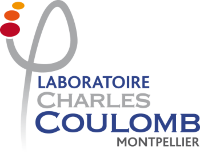Determining by Raman spectroscopy the average thickness and N -layer-specific surface coverages of MoS 2 thin films with domains much smaller than the laser spot size
Résumé
Raman spectroscopy is a widely used technique to characterize nanomaterials because of its convenience, non-destructiveness, and sensitivity to materials change. The primary purpose of this work is to determine via Raman spectroscopy the average thickness of MoS 2 thin films synthesized by direct liquid injection pulsed-pressure chemical vapor deposition (DLI-PP-CVD). Such samples are constituted of nanoflakes (with a lateral size of typically 50 nm, i.e., well below the laser spot size), with possibly a distribution of thicknesses and twist angles between stacked layers. As an essential preliminary, we first reassess the applicability of different Raman criteria to determine the thicknesses (or layer number, N ) of MoS 2 flakes from measurements performed on reference samples, namely well-characterized mechanically exfoliated or standard chemical vapor deposition MoS 2 large flakes deposited on 90 ± 6 nm SiO 2 on Si substrates. Then, we discuss the applicability of the same criteria for significantly different DLI-PP-CVD MoS 2 samples with average thicknesses ranging from sub-monolayer up to three layers. Finally, an original procedure based on the measurement of the intensity of the layer breathing modes is proposed to evaluate the surface coverage for each N (i.e., the ratio between the surface covered by exactly N layers and the total surface) in DLI-PP-CVD MoS 2 samples.
Fichier principal
 Determining_by_Raman_spectroscopy_the_average_thic.pdf (4.73 Mo)
Télécharger le fichier
Determining_by_Raman_spectroscopy_the_average_thic.pdf (4.73 Mo)
Télécharger le fichier
| Origine | Fichiers éditeurs autorisés sur une archive ouverte |
|---|---|
| licence |




